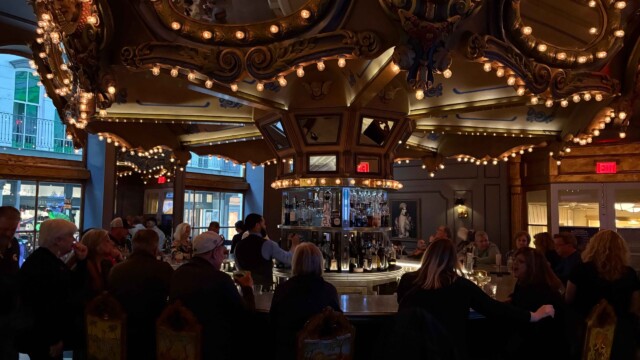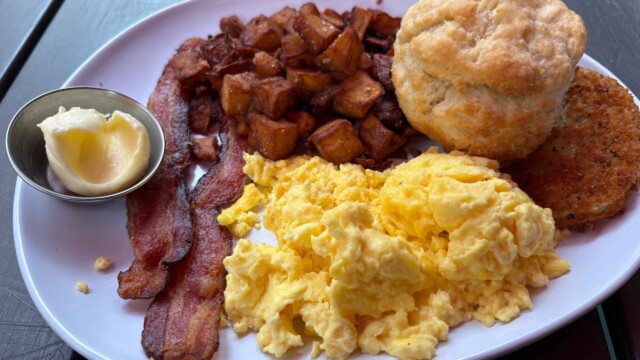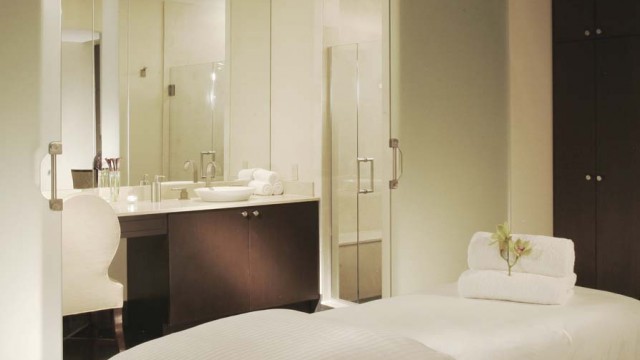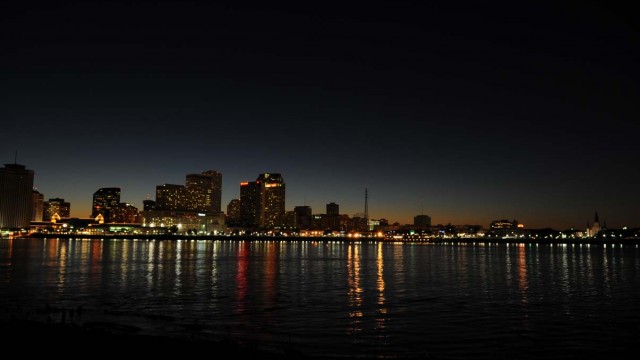Cuisine. Architecture. Jazz. Art. Shopping. Gambling. The Superdome. The Mississippi. All of this and world class convention facilities for business meetings and events are contributing to the success of the the French Quarter as a boomtown. Let the good times roll in New Orleans!
New Orleans is one of those cities that offers you something to do year round — football season (including the Sugar Bowl), food seasons (crawfish, crab, shrimp, etc.), Mardi Gras, St. Patrick’s Day, French Quarter Festival, New Orleans Jazz & Heritage Festival and other scheduled special events throughout the year. New Orleans is host to conventions, meetings and events throughout the year. Weddings, anniversaries and birthdays are celebrated here. And friends and couples just choose it as a long weekend getaway.
The result? New Orleans hosts about about 18 million visitors each year, according to data from the New Orleans Convention and Visitors Bureau.
I traveled to most recently Nawlins at the end of July — my fourth visit over the decades and second time this year. (Check out my review, Weekend in New Orleans.) My view today?
New Orleans is just one of those rare charming cities with so much to do on every street that it engages all your senses. New Orleans is a southern standout in the USA. And I didn’t even have a chance to leave the French Quarter.
I need to return to experience the Warehouse District, Garden District, the famed World War II Museum and Frenchmen Street for music — a gem I discovered years ago but wasn’t able to get to this year.
Here’s what you need to know if you’re planning a meeting or visiting New Orleans.

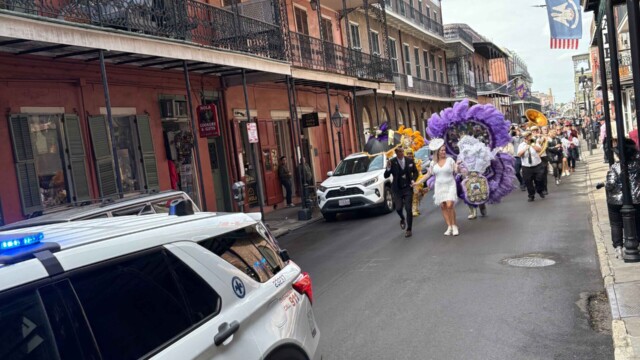




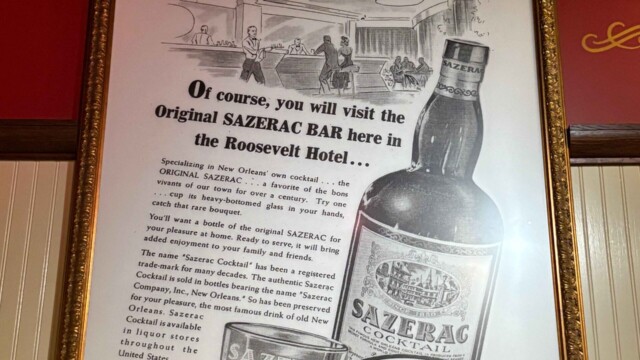
The French Quarter in New Orleans
The Crescent City has many neighborhoods, but the French Quarter is where business events are hosted. Established by the French in 1718, it is bound by Canal Street, Decatur Street, Esplanade Avenue and Rampart Street. It boasts a historic past with cultural contributions from the French, Spanish, Italians, Sicilians, Africans, Irish and others.
The French Quarter is filled with restaurants, music venues, shopping and tourist activities. Royal Street, Charles Street and Bourbon Street are popular with visitors. You’ll find everything from antiques and art to touristy and tacky gifts. There’s also the baudy nightlife that you expect.
If you enjoy architecture, the French Quarter is known for its amazing balconies and terraces with intricate ironwork from the 18th and 19th centuries, as well as historic mansions and gardens. Highlights include Jackson Square, St. Louis Cathedral, the city’s unique Creole history, the role of the Quadroon Ballroom in Creole society and other historic landmarks.
French Quarter Hotels in New Orleans
The French Quarter and central business district have several great hotels. New Orleans has more than 140 hotels and 26,000 sleeping rooms, according to data from the New Orleans CVB. And most are located in or near the French Quarter.
If you’re searching a business hotel in the heart of the French Quarter, consider Hotel Monteleone, Omni Royal Orleans Hotel and Royal Sonesta Hotel. Hotel Ambassador is a three-star hotel that’s located four blocks from the quarter and has received favorable feedback. Other hotels that are steps to the action yet relatively quiet enough at the end of the night include the Marriott New Orleans, Sheraton New Orleans, Ritz-Carlton New Orleans , AC New Orleans and The Roosevelt Hotel (see our review).
Just a few more minutes outside of the French Quarter is The Hyatt Regency New Orleans, and it caters to conventions: 200,000 square feet of flexible space, 80,000 square feet of exhibition space, two 25,000 square foot ballrooms, 70 meeting rooms, and 1,193 hotel rooms. The lobby is contemporary and offers several dining options, including a range of fresh catering options and local sourcing.
Dining in New Orleans
New Orleans is certainly known for its great food — 1,400 restaurants. And if you’re not careful, you’ll take a few extra pounds home by the end of your visit. Seafood and steaks are obvious choices for New Orleans, but another local favorite you’ll find everywhere is turtle soup, and that’s one of their delicacies. If you’re looking for smaller portions, you should go elsewhere.
Another standout is how this city can serve as an inspiration for sustainability in the U.S. — something that is very difficult given the way food is imported and transported around the country. Many restaurants and hotels source their food locally, and adjust their menus by season. Dickie Brennan, John Besh and Emeril Lagasse are just a few of the celebrity names in New Orleans who are leading the way.
The Brennan family has operated establishments here for generations. Dickie Brennan opened Tableau this year (it’s located just off the corner of Jackson Square). In a beautifully restored building, Tableau’s interior is a nod to the city’s Spanish heritage and housed on the site of the last Spanish Governor to rule over Louisiana. This distinction is what allowed Brennan to extend the balcony — a gallery — for dining. The menu showcases regional ingredients and classic French Creole dishes with a unique twist.
I went there on a previous visit, my meal included a seafood plate and the Rib Steak Bordelaise, a 22 oz. bone-in rye-eye served with an amazing roasted bone marrow and red wine sauce. The atmosphere here is relaxing and you’ll enjoy a pleasant evening. Tableau also has several private event spaces, including the use of an outdoor terrace and its very private wine room for very intimate and memorable gatherings for up to 18 people. (I highly recommend considering this new restaurant for future events.) Dickie Brennan is also the owner of the famous Palace Cafe on Canal Street.
Galatoire’s is on Bourbon Street. It’s a classic, elegant New Orleans institution that you won’t let you down. They have offered classic French Creole cuisine since 1905.
John Besh was a rising star chef in New Orleans who grew to celebrity status after Katrina as a result of his initiative to feed relief workers and others immediately after the disaster. That should certainly catch the attention of meeting planners. Today, Besh has nine restaurants, including August, his flagship restaurant. I had dinner at Besh’s Domenica and Luke restaurants.
Domenica is a dressy casual restaurant with Italian influences that are warm and inviting. The concept captures the essence of a traditional Sunday supper in a rural Italian village, where each beautiful dish is lovingly prepared with the purest ingredients according to age old techniques. Luke is another Besh restaurant. It is also dressy casual. This authetnic brasserie that combines German and French old world cooking techniques. Surprisingly, it is also recognized as having the best burger and fries, so I decided to try that — and I certainly agree. By the way, Luke has some nice, semi-private event space.
The Court of Two Sisters Restaurant is a spot I visited for breakfast on my previous visit, and I decided to return here for dinner on my visit in 2024. This is a dressy casual restaurant is the only one in town with a daily Jazz brunch buffet (features more than 80 items) and a Creole a la carte dinner. The Court of Two Sisters has the largest historical courtyard in the French Quarter (frequently used for private special events) and has an beautiful wisteria tree that is lit and shelters nearly the entire courtyard.
Muriel’s Jackson Square is a lovely place. It’s a contemporary creole restaurant that offers a range of options. I went there for brunch with friends and there was live music that visited tables. It’s worth noting that Muriel’s has several rooms, including private space for events upstairs (a 20-year wedding anniversary was happening that day).
Other spots I had a chance to eat that you may want to go: Mr. B’s Bistro (regional cuisine), Ruby Slipper (for breakfast near Caesar’s) and Mother’s Restaurant (a cafe style joint that you order at the counter and food delivered to your table).
Things to Do in New Orleans
The Mardi Gras City is known for fun, and there are many museums and venues to explore (which are also popular for private events and receptions), including Aquarium of the Americas, Insectarium Museum, Mardi Gras World (which I’d like to visit at some point in the future) and Louisiana State Museum, among others. And tours — plantation, garden district, haunted, cemetery, swamp and city tours — are extremely popular. If you’re near Jackson Square, go there and check out the street artists and their work, especially on the weekends.
I”ve been to Sazerac House twice now. It’s an opportunity to visit three floors of exhibits that take you through the history of the sazerac cocktail, one of the country’s first cocktails. The self-guided tour explains cocktail culture, how whiskey and bitters are produced, and showcases the distillery process (there’s an in-house distillery that produces the bourbon they use on site). Plus, they offer three small tastings of cocktails along the way. Sazerac House is definitely worth the visit. If time allows, you should then go to the Sazerac Bar at the Roosevelt Hotel before you leave the city to gain the complete experience.
Also worthwhile: St. Louis Cemetery Tour No. 1. This is a guided tour through one of New Orleans most fascinating Catholic cemeteries. Our guide Zelda was terrific. She explained how the marble tombs are maintained if perpetual care was purchased and if it wasn’t (and that’s easy to see). This will be the final resting spot for actor Nicolas Cage. You’ll see the resting spot for voodoo queen Marie Laveau. And you’ll be surprised to learn how many souls fit into each of the above ground tombs.
A Mississippi River cruise is a terrific way to experience New Orleans. The Paddlewheeler Creole Queen River Cruise is a 2.5 hour historical cruise that gives you a panoramic view of the Crescent City Connection Bridge, the French Quarter and industrial facilities along the riverbank. It stops about 45 minutes into the ride so you can get off the boat and learn about the Battle of New Orleans (1812).
In a prior visit, I enjoyed a harbor cruise and lunch aboard the Steamboat Natchez, which departs from Toulouse at the Mississippi River. Tickets are at the Gray Line Light House where the cruise also departs. This two-hour cruise from the heart of the French Quarter takes you back when cotton was king and life was as slow and graceful as the current on the Mississippi. During the cruise, I actually met a couple who was visiting New Orleans from Northwest Canada. They told me they were in town for a convention at the Hyatt Regency, and then extended their stay — perfect way to leverage their time when traveling for business.
Another unique activity is a Swamp & Bayou Tour (Gray Line), and it also departs from Toulouse at the Mississippi River. Within a short 30 minute drive, you can experience the timeless beauty of South Louisiana in a custom built swamp boat through part of the Jean Lafitte National Historical Park – Barataria Preserve. You’ll watch alligators as they swim and sun themselves, and have a chance to meet and hold a baby alligator in your hands along the way. That was one of my favorite memories from the trip.
New Orleans has plenty of nightlife options, but Pat O’Brien’s is a highlight. It has an outdoor patio and a traditional Irish bar. Find a table in the Piano Bar, where you can order a Hurricane and listen to a full range of music. You’ll hear songs like, Creedence Clearwater’s Proud Mary, Elton John’s Goodbye Yellow Brick Road, and Jimmy Buffet’s Margaritaville and many others. Simply write your request on a napkin, tip the talent, wait for your song and sing along. Oh yea, and you’ll make new friends all around you by the end of the night.
If you’re looking for an alternative to Boubon Street but a spot with a similar vibe, check out Frenchman Street. It has a full range of music and a new generation has taken it over. Or head over to Caesar’s New Orleans if you’re searching for gaming and casino entertainment. I lost money there, again…
For meeting planners considering a very special activity, the French Quarter streets can become a unique venue where corporate and association events take to the streets “Mardi Gras style” as they transfer from one location to another through the city (ask your destination management contact or the New Orleans CVB for more information).
Logistics and Weather in New Orleans
Louis Armstrong International Airport is a quick 15 mile drive to downtown New Orleans. Once you’re in the French Quarter, everything is extremely walkable. Groups have the full range of options to transfer attendees, and taxis are easy to find.
New Orleans has a subtropical climate with pleasant year-round temperatures. Temperatures range from the mid 40s°F in winter to the upper 90s°F in the summer. Rainfall is common in New Orleans, with a monthly average of about five inches of precipitation.













